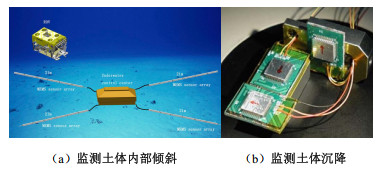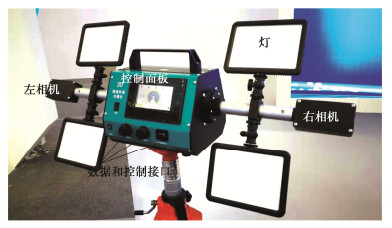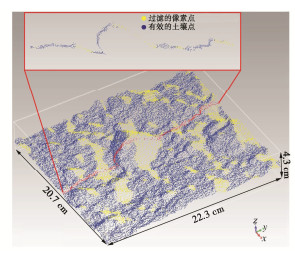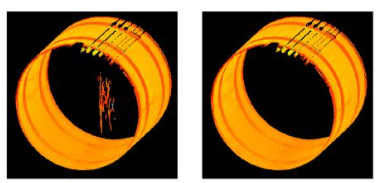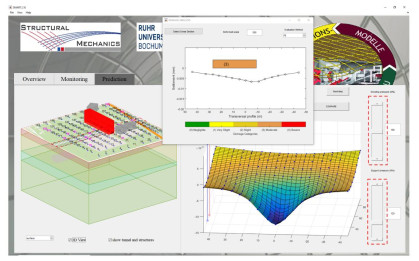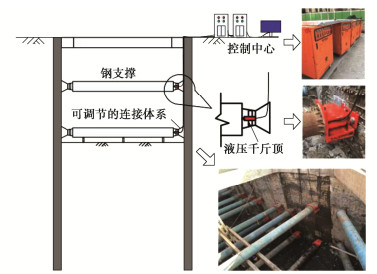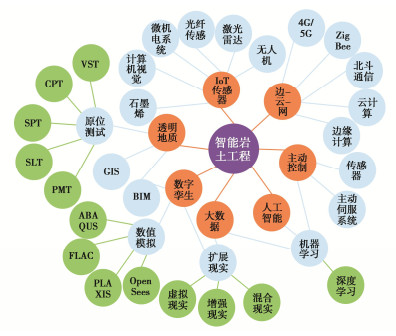Intelligent geotechnical engineering
-
摘要: 以物联网、现代通讯、大数据、人工智能等技术为核心的第四次工业革命成为了众多研究领域智能化升级的平台,新时代条件下传统岩土工程研究遇到了前所未有的机遇和挑战,岩土工程与最新的信息技术、计算机科学技术相互融合,如建筑信息模型、物联网、人工智能、深度学习、增强现实等可实现岩土工程的智能化转型。研究初步构建了“智能岩土工程”的知识图谱,探索了相应的实现路径,阐述了基于新技术的三维地质建模–物联网–深度学习–扩展现实的岩土工程智能化转型方法;介绍了建筑信息模型(BIM)与地理信息系统(GIS)一体化的三维地质建模、“端–边–云–网”的技术架构、以主动伺服加载系统为代表的岩土工程(深基坑工程)风险主动控制系统;阐明了物联网传感器技术在岩土工程领域的应用情况、虚拟现实与增强现实技术在岩土工程领域的应用现状;分析了人工智能(深度学习)在岩土工程风险预测预警方面的关键作用;构建了未来智能岩土工程的知识图谱,为拟从事智能岩土工程相关的研究人员提供借鉴。Abstract: The fourth industrial revolution based on the core technologies of Internet of Things (IoT), modern communication, big data and artificial intelligence (AI) is an upgrading platform for many different research fields. The traditional geotechnical engineering has great opportunities and grand challenges in this new era. Integration of the geotechnical engineering, innovative information technology and computer science technology such as building information modelling (BIM), IoT, AI, deep learning and argument reality can be used to realize intelligent transformation of the traditional geotechnical engineering. The knowledge mapping of the intelligent geotechnical engineering is preliminarily established, and the relevant realization paths are investigated. The transformation method for the intelligent geotechnical engineering "3D geological modelling-IoT-deep learning-extended reality" based on the innovative technologies is depicted. 3D geological modelling using the fusion of BIM and the geographic information system, the technological frame of "end-edge-cloud-network" and the active risk control for geotechnical engineering (deep excavation engineering) based on the active servo-loading system are introduced. The application status of the IoT sensoring technology visual reality and argument reality in the geotechnical engineering is introduced. The key role of AI (deep learning) in the geotechnical engineering for monitoring and early warning is analyzed. The knowledge mapping of future development of the intelligent geotechnical engineering is proposed, providing advice and guidance for the relevant researchers in the geotechnical engineering.
-
0. 引言
由废旧轮胎破碎颗粒与天然砂按特定比例配合得到的混合物简称橡胶砂(RSM,rubber sand mixture)。相比于常规土,橡胶砂具有重度小、模量低、阻尼大、弹性好等特点,可应用于特殊土木工程领域,如用作桥台、挡墙、边坡的轻质填料[1]和保温隔热填料[2],用于膨胀土和软土治理[3],作为生命线管道回填保护[4],以及作为村镇房屋廉价隔震垫层等[5-8]。由于橡胶砂在土木工程中的应用可大量消耗废旧轮胎,且不会对地下水产生二次污染[9],是废旧轮胎资源化再利用的典范途径。对橡胶砂的力学特性展开研究,为其在土木工程中的应用奠定基础,具有重要的意义。
相比于母材砂,橡胶砂宏观力学特性的改变主要是由于橡胶颗粒的掺入改变了颗粒之间的接触状态。因此,橡胶颗粒的掺量(RC,rubber content)是影响橡胶砂力学特性的主要因素,已有文献对其展开了深入的研究[10-16]。但显而易见,橡胶–砂混合物中颗粒之间的接触状态除受橡胶颗粒质量掺量的影响外,还与橡胶颗粒与砂颗粒的粒径比(PSR,particle size ratio)有关,甚至还受两种因素的耦合影响。图1给出了在橡胶含量一定的情况下,不同胶砂颗粒粒径比时橡胶砂的颗粒组分构成示意图,可见,随着粒径比的变化,砂颗粒的接触状态、粒间空隙的填充状态均发生改变,因而其力学性能必将受到影响。
已有关于胶–砂粒径比对橡胶砂动力特性影响的研究报道甚少。Lee等[17]通过有侧限固结和弯曲元试验研究了粒径比对橡胶砂受压变形和初始剪切模量的影响,但未能揭示粒径比对橡胶砂动剪模量和阻尼比随动应变幅值非线性变化特性的影响规律;Ehsani等[18]、Li等[19]分别在通过扭转共振柱–动三轴联合试验研究橡胶含量和砂的矿物特性对橡胶砂动剪模量的影响,以及橡胶砂的抗液化性能研究中,考虑了粒径比因素,给出了定性的试验现象,但由于所考虑粒径比工况较少,难以总结定量规律。
基于以上研究现状,本文利用GDS-RCA共振柱系统,研究4种橡胶含量、4种粒径比橡胶砂在3种围压下的动力特性,探讨粒径比对橡胶砂动剪模量和阻尼比的影响规律,分析其与橡胶含量(RC,rubber content)、围压(
σ0 )等因素对橡胶砂动力特性的耦合影响规律及机理,以期为后续研究和相关应用提供参考。1. 试验介绍
1.1 试验材料
试验砂为厦门艾思欧(ISO)标准砂,颗粒粒径0.05~2 mm,平均粒径为0.64 mm,颗粒相对密度2.67;橡胶颗粒为废旧轮胎胶粒,筛取4种颗粒集,平均粒径分别为0.3,0.6,1.9和3.7 mm,相应的胶砂粒径比分别为0.5,0.9,3.0,5.8。颗粒材料的级配曲线如图2所示。橡胶颗粒相对密度为1.1。
1.2 试验工况与试样制备
每种粒径比的橡胶砂考虑4种质量配比,每种质量–粒径比工况及母材砂考虑3种围压(50,100,200 kPa),共51种试验工况,每种工况下进行3个试样测试。试样制备前实测不同质量比及粒径比橡胶砂的最大、最小干密度,根据相同的初始相对密度计算该工况下橡胶砂试样的质量。试样搅拌均匀后采用砂雨法装样,每个试样土料分5次均匀落入试模,分层压实,尽量保证试样均匀。不同配比橡胶砂的装样控制密度、试样质量及初始孔隙比如表1所示。部分配比工况下的橡胶砂混合料照片如图3所示。
表 1 不同配合比橡胶砂试样制备控制参数Table 1. Properties of rubber-sand mixtures with different mass ratios粒径比PSR 橡胶含量RC/% 最小干密度rd,min/(g·cm-3) 最大干密度rd,max/(g·cm-3) 控制密度rd/(g·cm-3) 相对密实度Dr 装样质量/mg 初始孔隙比e0 纯砂 0 1.70 1.96 1.88 0.7 368.4 0.423 0.5 5 1.46 1.79 1.65 0.7 323.9 0.511 10 1.29 1.70 1.55 0.7 304.5 0.507 15 1.18 1.53 1.41 0.7 276.0 0.565 30 0.82 1.13 1.01 0.7 198.6 0.848 0.9 5 1.49 1.75 1.66 0.7 326.2 0.500 10 1.32 1.55 1.47 0.7 288.9 0.588 15 1.16 1.43 1.33 0.7 262.0 0.648 30 0.82 1.07 0.98 0.7 193.2 0.900 3.0 5 1.59 1.83 1.75 0.7 343.5 0.425 10 1.50 1.74 1.66 0.7 326.6 0.405 15 1.41 1.65 1.57 0.7 308.2 0.401 30 1.14 1.31 1.25 0.7 246.4 0.490 5.8 5 1.61 1.83 1.76 0.7 345.8 0.415 10 1.55 1.77 1.70 0.7 334.1 0.373 15 1.43 1.69 1.61 0.7 315.4 0.369 30 1.23 1.43 1.36 0.7 266.9 0.375 1.3 试验设备和试验方法
试验在湖南工业大学岩土实验室GDS共振柱测试系统上进行,振动方式为扭转剪切振动。
试验步骤如下:①装样完成后施加-20 kPa的负压,保持试样稳定;②用游标卡尺量测试样初始高度和直径(量3次取平均值);③依次装上驱动装置、位移传感器、压力室,对竖向位移进行调零处理;④分四次进行加围压、卸负压,每次加5 kPa围压、卸-5 kPa负压,确保试样稳定;⑤保持反压为0,施加目标围压,固结至试样竖向位移稳定;⑥进行共振柱试验。
2. 结果分析
2.1 动剪模量曲线
试验发现,在相同的围压和质量配比情况下,不同粒径比橡胶砂的动剪模量曲线存在显著的差异,且不同橡胶含量时,粒径比的影响规律不同,即橡胶砂动剪模量明显受橡胶含量与粒径比两者的耦合影响:
(1)当橡胶含量较小(RC=5%)时,橡胶砂动剪模量衰减曲线
Gd –γd 随粒径比增大而单调降低。(2)当橡胶含量较大(RC≥10%)时,
Gd –γd 曲线随粒径比的增大而表现先减小后增大的现象,且临界粒径比较一致地为0.9。(3)对于橡胶含量不小于10%的橡胶砂,当粒径比超过临界值后继续增大时,动剪模量曲线回升,但其回升规律随橡胶含量不同而各异。当RC =10%时,粒径比3.0和5.8的动剪模量曲线依次增大,且均低于粒径比0.5时的动剪模量曲线。当RC =15%时,粒径比3.0和5.8的动剪模量曲线依次增大,且均高于粒径比0.5时的动剪模量曲线。当RC =30%时,粒径比3.0的动剪模量曲线显著高于粒径比0.5时的动剪模量曲线,而粒径比5.8的动剪模量曲线复又相对粒径比3.0时降低,当仍然远高于粒径比0.5时的动剪模量曲线。
不同围压下粒径比对橡胶砂动剪模量曲线的影响规律相似。限于篇幅,本文仅给出围压
σ0 =100 kPa时的橡胶砂动剪模量随动应变幅值的衰减规律,如图4所示。2.2 粒径比对橡胶砂最大动剪模量的影响
最大动剪模量是土动力特性的重要表征,也是岩土体动力响应分析的必需参数。采用经典的H-D公式对动剪模量–动剪应变试验曲线进行拟合,可得到各配比工况下的最大动剪模量。
Gd=Gdmax1+γd/γref。 (1) 式中
Gdmax 为最大动剪模量;γd 为动剪应变,Gd 为对应于动剪应变γd 的动剪模量,γref 为参考剪应变,其对应的动剪模量为0.5Gdmax 。可知,γref 越大,动剪模量的衰减速率越慢。各试验工况下动剪模量曲线的拟合曲线以细实线绘制于图4,可见拟合曲线与试验散点规律吻合较好,相应的拟合参数值列如表2所示。
表 2Gd –γd 试验曲线拟合参数Table 2. Fitting parameters of testedGd –γd curvesσ0 50 kPa 100 kPa 200 kPa PSR RC Gdmax /MPaγref /%Gdmax /MPaγref /%Gdmax /MPaγref /%─ 0% 83.27 0.02039 122.27 0.02826 180.90 0.03991 0.5 5% 64.29 0.02950 112.26 0.02687 153.51 0.03752 10% 45.34 0.02947 72.60 0.03879 113.57 0.04766 15% 24.03 0.09993 43.57 0.06420 63.82 0.09913 30% 6.49 0.09960 8.97 0.28200 16.22 0.21900 0.9 5% 64.67 0.02915 89.00 0.03805 142.21 0.04431 10% 32.68 0.04994 50.45 0.05680 73.06 0.07777 15% 18.99 0.09165 30.65 0.08097 47.95 0.09669 30% 3.74 0.33000 5.99 0.24900 10.09 0.28700 3.0 5% 60.16 0.03119 84.43 0.03773 122.28 0.04588 10% 42.88 0.03583 60.24 0.04407 86.22 0.05868 15% 30.32 0.03836 43.39 0.05078 65.01 0.06049 30% 14.59 0.05607 17.85 0.08775 26.71 0.07472 5.8 5% 57.43 0.02244 83.92 0.03000 128.09 0.04353 10% 46.27 0.03382 65.02 0.03875 92.49 0.04964 15% 34.53 0.03496 48.58 0.04771 71.33 0.06941 30% 13.01 0.05787 17.75 0.09621 24.95 0.14200 图5给出了不同橡胶含量、不同围压下,橡胶砂最大动剪模量
Gdmax 随粒径比PSR的变化规律。可见,在橡胶含量相同的情况下,不同围压下最大动剪模量随粒径比的变化曲线近似平行,说明粒径比与围压对动剪模量的耦合影响效应较小。而橡胶含量与粒径比对橡胶砂最大动剪模量的影响存在较明显的耦合影响。当橡胶含量为5%时,Gdmax 随粒径比增大而近似单调减小。当橡胶含量在10%~15%时,Gdmax 随粒径比增大先减小而后增大,粒径比0.9时达到最小值。当橡胶含量达到30%时,Gdmax 随粒径比增大出现反S形变化,先减小并在粒径比0.9时达到最小值,而后在粒径比3.0时达到最大值,然后随着粒径比增大至5.8再次缓慢下降。以粒径比0.9(接近1.0)时的工况为参照,可分析不同橡胶含量下粒径比对橡胶砂
Gdmax 的影响程度,如图6所示。可见,当橡胶含量小于15%时,不同围压下的Gdmax/Gdmax,PSR=0.9 –PSR试验散点较为接近,说明粒径比与围压对最大动剪模量的耦合影响效应较小;当橡胶含量为30%时,不同围压下的Gdmax/Gdmax,PSR=0.9 –PSR试验点离散性稍大,但变化趋势相同。由不同围压下的
Gdmax/Gdmax,PSR=0.9 –PSR平均趋势线对比可见,随着橡胶含量的增大,粒径比对Gdmax 的影响程度亦越大。当橡胶含量为5%时,粒径比从0.5变化至5.8,所引起的最大动剪模量变化在0.2倍以内,当橡胶含量为30%时,同样的粒径比变化所引起的最大动剪模量变化可达到3~4倍。可见,粒径比对橡胶砂动剪模量的影响不能忽略。由上述分析可知,胶砂粒径比与橡胶含量、围压一样,是影响橡胶砂最大动剪模量的主要因素。下面,将研究如何在已知上述条件的情况下,对橡胶砂的最大动剪模进行预测。2.3 橡胶砂最大动剪模量经验公式
在土动力学领域,Hardin等[20]建议的常规土最大动剪模量经验公式得到了大量实践验证与广泛应用:
Gdmax=AF(e)OCRkp1−naσn0, (2) 式中,A为无量纲模量参数,
F(e) 为孔隙比函数,OCR为超固结比,pa 为标准大气压力,σ0 为围压,k,n为指数参数。对于重塑非黏性土试样OCR可取1,故指数k可暂不研究。大量研究表明,n可取0.5。图7给出了不同橡胶含量、不同粒径比时,用
OCRk(paσ0)0.5 对Gdmax 进行归一化,得到的无量纲系数AF(e) 与围压σ0 的关系曲线。可见,当n取0.5时,不同橡胶含量、不同粒径比橡胶砂的无量纲模量系数AF(e) 与围压σ0 的关系曲线均大致呈水平状,说明其与围压无关,亦即用OCRk(paσ0)0.5 可对Gdmax 进行良好的归一化。无量纲模量系数
AF(e) 为仅与孔隙比e相关的函数。Hardin给出了常规土的经验式[20]AF(e)=123(2.973−e)2/(1+e)。 (3) Feng等[21]给出了橡胶砂的经验式:
AF(e)=A/(0.3+0.7e2)。 (4) 上两式所对应的
AF(e) –e关系曲线绘制于图8(a),可见,两个经验公式所给出的无量纲模量系数AF(e) 均随着e的增大而单调减小。关于橡胶砂孔隙比的确定存在两种观点。第一种观点,将橡胶颗粒当作混合土的一部分,孔隙比等于孔隙体积与砂颗粒体积和橡胶颗粒体积之和的比值,即
e=Vviod/(Vsand+Vrubber), (5) 式中,
e 为孔隙比,Vviod ,Vsand ,Vrubber 分别为孔隙体积、砂颗粒体积和橡胶颗粒体积。第二种观点认为,由于橡胶颗粒模量远小于砂颗粒模量,且橡胶体积不可压缩(橡胶材料的泊松比近似为0.5),因此橡胶颗粒本身应视为孔隙的一部分[21-22]。相应的孔隙比为
e=(Vviod+Vrubber)/Vsand, (6) 式中各符号的意义与式(5)相同。
本文试验发现,当按常规方法确定橡胶砂孔隙比(即按式(5)计算孔隙比)时,不同粒径比橡胶砂
AF(e) –e关系表现出明显差异且无规律性,与图8(a)所示常规土AF(e) 随e单调减小的已知认识不符,如图8(b)所示。而当将橡胶颗粒体积计入孔隙(即按式(6)计算孔隙比)时,不同粒径比橡胶砂的AF(e) –e关系曲线高度集中,且表现出明显的与常规土类似的规律性,如图8(c)所示。可知,本文试验表明,当将橡胶颗粒体积视为孔隙体积的一部分时,则Hardin针对常规土所提出的最大动剪模量经验公式仍然可适用于橡胶砂这种人工混合土。此结论也再次验证了Feng等[21]的研究发现。经对比,经验公式(4)能更好地模拟橡胶砂无量纲模量系数
AF(e) 与孔隙比e(按式(6)计算,后同)的关系,且拟合得到系数A=530,拟合曲线与试验点的对比关系示于图8(d)。图9给出了不同质量配比及粒径比对橡胶砂孔隙比的影响曲线。可见,随着橡胶含量的增加,孔隙比呈加速增大趋势。不同粒径比时,孔隙比增大速率不同。粒径比接近1时,
e –RC 关系曲线最高,粒径比越远离1,e –RC 关系曲线越低。设橡胶砂e –RC 关系可用下式进行描述:e=es[1+p⋅RC+q⋅RC2], (7) 式中,
es 为橡胶含量为零时(即母材纯砂)的孔隙比,取0.423;p,q为无量纲拟合参数。式(7)的拟合曲线一同绘于图9中,可见与试验散点规律吻合良好。相应的拟合参数p,q值列于表3所示。表 3e –RC 关系曲线拟合参数Table 3. Parameters values ofe –RC relationshipsPSR p q R2 0.5 10.52 25 0.995 0.9 11.64 25 0.999 3.0 5.37 25 0.998 5.8 3.83 25 0.989 由表3可见,参数q为与粒径比PSR无关的定值,参数p则表现出类似以粒径比PSR=1为中心的正态分布的形式,即PSR值越靠近1,p值越大,PSR值越远离1,p值越小。因此,设参数p与粒径比PSR之间的关系可用Gauss函数表达:
p=p0+Bω√π/2exp[−2(x−cω)2] x={PSR PSR≥11/PSR PSR<1, (8) 式中,x为Gauss函数自变量。当
PSR≥1 时,x=PSR ,当PSR<1 时,x=1/PSR 。p0 ,B,ω ,c均为Gauss函数参数,其中c=1 。用上式对表3中参数p与粒径比PSR之间的关系进行拟合,如图10所示。图中,实心散点为真实试验点,空心散点为试验点以PSR=1为镜像轴的虚拟约束点,实线为用上述两种点按式(8)拟合得到的曲线,拟合得到的Gauss函数参数分别
p0=3.65 ,B=26 ,ω=2.46 。图11给出了根据式(2)~(8)预测的橡胶砂最大动剪模量与实测值的对比。可见本文所提公式能较好地预测橡胶砂最大动剪模量随橡胶砂质量配比、粒径比以及围压的变化规律。
2.4 阻尼比
图12给出了橡胶砂的阻尼比试验曲线,其中各子图分别将相同橡胶含量和围压、不同粒径比工况的阻尼比曲线绘制在同一坐标系,以便观察粒径比对阻尼比曲线的影响。由图可见:
(1)当橡胶含量较低(RC =5%)时,橡胶砂阻尼比较小,与纯砂接近,不同粒径比橡胶砂阻尼比曲线亦较为接近。
(2)随着橡胶含量的增大(RC≥10%),橡胶砂阻尼比明显高于纯砂,不同粒径比橡胶砂阻尼比曲线之间的差异也逐渐增大。
(3)在试验所涉及12种橡胶含量和围压组合工况中,有10种工况下,橡胶砂阻尼比曲线随粒径比的增大表现出先降低后升高的规律,临界粒径比为0.9,亦即当粒径比接近1时,橡胶砂阻尼比最小。
(4)随着围压增大,相同橡胶含量的橡胶砂阻尼比逐渐减小,但随着橡胶含量增加,围压对阻尼比的影响减弱。
(5)不同围压下,阻尼比曲线随粒径比变化的规律相似,说明围压与粒径比对橡胶砂阻尼比特性的影响无明显耦合效应。
2.5 机理分析
橡胶砂中主要存在3种接触形式:砂–砂接触、胶–砂接触和胶–胶接触。橡胶砂力学特性变化的微观机制就是由于这3种接触所组成的力链分布改变所致。由图1的示意图可知,橡胶含量和胶砂粒径比均会改变混合物中橡胶颗粒和砂颗粒的分布状态和颗粒接触状态,因此两者对橡胶砂动力特性存在耦合影响效应。
当橡胶含量较小(如RC=5%)时,橡胶颗粒数量少而离散分布于砂颗粒中。此时,粒径比越小,橡胶颗粒越分散,且分布于砂颗粒间的空隙,基本不参与整体受力,力链主要由砂–砂接触所组成,故橡胶砂表现出较大的动剪模量;随着粒径比增大,橡胶颗粒数量减小但尺寸增大,超出砂颗粒间空隙尺寸后则参与受力,使得部分力链上的砂–砂接触被胶–砂接触所代替,因而动剪模量降低。
随着橡胶含量增多,混合物中橡胶组分增大。当粒径比远小于1时,橡胶组分的分布弥散,相当部分小橡胶颗粒填充于砂颗粒间的空隙未能参与整体受力,削弱了其对混合物抵抗变形能力衰减作用,故动剪模量仍较大。当粒径比接近1时,橡胶颗粒与砂颗粒尺寸相近,两者的接触最为充分,原力链中的砂–砂接触最大限度地被砂–胶接触所替代,故动剪模量达到最小值。当粒径比超过1继续增大时,橡胶组分的分布更加集中而形成少数大的橡胶颗粒悬浮于砂颗粒中。由于橡胶材料的不可压缩性,这些大的橡胶颗粒被砂颗粒包围而不可被嵌入,从而形成拱效应,使得力链能绕过它而继续通过砂–砂接触传递。这解释了当粒径比超过0.9后,动剪模量回升的原因。粒径比越大,橡胶组分的集中程度越大,力链所需绕过的“不可压缩空腔”的数量也就越少,因而动剪模量回升越多。但当橡胶含量足够多时,可能形成连续相邻的“空腔”,进而削弱力链拱的侧向约束,从而使橡胶颗粒参与力链的传导。这解释了橡胶含量为30%时,当粒径比从3.0增加至5.8时,橡胶砂动剪模量再次降低的试验现象。
橡胶砂的阻尼主要由振动过程中颗粒间的摩擦、砂颗粒去棱角化破碎、橡胶颗粒的变形发热等能量耗散所组成。粒径比接近1时,橡胶颗粒与砂颗粒接触最为充分,砂–砂刚性接触减少,砂颗粒间的去棱角化破碎耗能得到最大程度减小。这解释了在绝大多数工况下,粒径比0.9时橡胶砂阻尼比最小的原因。但即便如此,由于橡胶颗粒的摩擦、变形耗能以及振动发热效应,仍然比纯砂的阻尼比大。
3. 结论
(1)橡胶含量和胶砂粒径比均会改变混合物中橡胶颗粒和砂颗粒的分布状态和颗粒接触状态,并共同影响混合土孔隙比,因此橡胶含量和粒径比对橡胶砂的动力特性存在耦合效应。
(2)当橡胶含量较小(RC =5%)时,随着粒径比的增大,由于试样内部力链中部分砂–砂接触逐渐转变为胶–砂接触,橡胶砂动剪模量衰减曲线
Gd−γd 会有所降低;当橡胶含量较大(RC≥10%)时,试样内部橡胶颗粒增多,在粒径比为0.5时相当部分橡胶颗粒处于砂颗粒间隙间,未参与受力,在粒径比接近1时胶–砂接触最为充分,而在粒径比继续增大时由于橡胶颗粒增大且不可压缩而产生拱效应,因此Gd−γd 曲线随粒径比的增大而表现先减小后增大的现象,临界粒径比约为1。(3)随着橡胶含量的增多,参考剪应变增大,橡胶砂动剪模量随动应变的衰减变缓;当橡胶含量小于10%时,粒径比对参考剪应变的影响较小,当橡胶含量大于10%时,粒径比对参考剪应变的影响较为明显,后者随着前者的粒径比减小而增大。
(4)当橡胶含量较低(RC =5%)时,橡胶砂阻尼比较小,与纯砂接近,不同粒径比橡胶砂阻尼比曲线亦较为接近;随着橡胶含量的增大(RC≥10%),橡胶砂阻尼比明显高于纯砂,不同粒径比橡胶砂阻尼比曲线之间的差异也逐渐增大;橡胶砂阻尼比曲线随粒径比的增大表现出先降低后升高的规律,临界粒径比为0.9,亦即当粒径比接近1时,橡胶砂阻尼比最小。
(5)当将橡胶颗粒视作孔隙时,Hardin常规土最大动剪模量经验公式仍可适用于橡胶砂,结合本文所提橡胶砂孔隙比试验拟合式,可对不同质量配比和粒径比橡胶砂的最大动剪模量进行合理预测。
-
图 3 隧道图像测量设备[21]
Figure 3. Measurement devices for tunnel topography
图 4 沿激光扫描仪视线拍摄的地面混合像素横截面[24]
Figure 4. Example of automatically-detected mixed pixels in a single scan station
图 5 激光扫描仪获取的隧道点云图与处理方法[28]
Figure 5. Obtained point cloud of a tunnel
-
[1] 赵艳莉. 基于计算机三维地质模型的岩土工程设计与可视分析——评《岩土工程勘察与设计》[J]. 岩土工程学报, 2019, 41(7): 1381. https://www.cnki.com.cn/Article/CJFDTOTAL-YTGC201907028.htm ZHAO Yan-li. Based on the design and visual analysis of geotechnical engineering based on computer three-dimensional geological model[J]. Journal of Geotechnical Engineering, 2019, 41(7): 1381. (in Chinese) https://www.cnki.com.cn/Article/CJFDTOTAL-YTGC201907028.htm
[2] 谭顺辉. 隧道掘进机多功能化及智能化的发展与推广[J]. 隧道建设, 2020, 40(9): 1243–1250. https://www.cnki.com.cn/Article/CJFDTOTAL-JSSD202009001.htm TAN Shun-hui. Development and application of multi-functional and intelligent tunnel boring machine[J]. Tunnel Construction, 2020, 40(9): 1243–1250. (in Chinese) https://www.cnki.com.cn/Article/CJFDTOTAL-JSSD202009001.htm
[3] 陈祖煜, 赵宇飞, 邹斌, 等. 填筑碾压施工无人驾驶技术的研究与应用[J]. 水利水电技术, 2019, 50(8): 1–7. https://www.cnki.com.cn/Article/CJFDTOTAL-SJWJ201908001.htm CHEN Zu-yu, ZHAO Yu-fei, ZOU Bin, et al. Research and application of drive technology of dam filling rolling construction[J]. Water Resources & Hydropower Technology, 2019, 50(8): 1–7. (in Chinese) https://www.cnki.com.cn/Article/CJFDTOTAL-SJWJ201908001.htm
[4] 熊自明, 卢浩, 王明洋, 等. 我国大型岩土工程施工安全风险管理研究进展[J]. 岩土力学, 2018, 39(10): 3703–3716. https://www.cnki.com.cn/Article/CJFDTOTAL-YTLX201810028.htm XIONG Zi-ming, LU Hao, WANG Ming-yang, et al. Research progress on safety risk management for large scale geotechnical engineering construction in China[J]. Rock and Soil Mechanics, 2018, 39(10): 3703–3716. (in Chinese) https://www.cnki.com.cn/Article/CJFDTOTAL-YTLX201810028.htm
[5] 戴妙林, 屈佳乐, 刘晓青, 等. 基于GA-BP算法的岩质边坡稳定性和加固效应预测模型及其应用研究[J]. 水利水电技术, 2018, 49(5): 165–171. https://www.cnki.com.cn/Article/CJFDTOTAL-SJWJ201805024.htm DAI Miao-lin, QU Jia-le, LIU Xiao-qing, et al. Study on GA-BP hybrid algorithm-based prediction model and its application to rock slope stability and reinforcement effect[J]. Water Resources and Hydropower Engineering, 2018, 49(5): 165–171. (in Chinese) https://www.cnki.com.cn/Article/CJFDTOTAL-SJWJ201805024.htm
[6] ONSEL I E, CHANG O, MYSIOREK J, et al. Applications of mixed and virtual reality techniques in site characterization[C]// 26th Vancouver Geotechnical Society Symp. Vancouver, 2019.
[7] WANG R X, WANG R, FU P C, et al. Portable interactive visualization of large-scale simulations in geotechnical engineering using Unity3D[J]. Advances in Engineering Software, 2020, 148: 102838. doi: 10.1016/j.advengsoft.2020.102838
[8] VAN ECK N J, WALTMAN L, VOSviewer Manual[M]. Leiden: Univeristeit Leiden, 2011.
[9] 韩同春, 林博文, 何露, 等. 基于GIS与数值模拟软件耦合的三维边坡建模方法及其稳定性研究[J]. 岩土力学, 2019, 40(7): 2855–2865. doi: 10.16285/j.rsm.2018.0439 HAN Tong-chun, LIN Bo-wen, HE Lu, et al. Three-dimensional slope modelling method and its stability based on coupled GIS and numerical simulation software[J]. Rock and Soil Mechanics, 2019, 40(7): 2855–2865. (in Chinese) doi: 10.16285/j.rsm.2018.0439
[10] VALERIA N, ROBERTA V, VITTORIA C A. A new frontier of BIM process: geotechnical BIM[C]// Proceedings of the Ⅻ European Conference on Soil Mechanics and Geotechnical Engineering, Icelandic Geotechnical Society. Reykjavik, 2019.
[11] ZOU Y, KIVINIEMI A, JONES S W. A review of risk management through BIM and BIM-related technologies[J]. Safety Science, 2017, 97: 88–98. doi: 10.1016/j.ssci.2015.12.027
[12] FABOZZI S, BIANCARDO S A, VEROPALUMBO R, et al. I-BIM based approach for geotechnical and numerical modelling of a conventional tunnel excavation[J]. Tunnelling and Underground Space Technology, 2021, 108: 103723. doi: 10.1016/j.tust.2020.103723
[13] HONG C Y, ZHANG Y F, ZHANG M X, et al. Application of FBG sensors for geotechnical health monitoring, a review of sensor design, implementation methods and packaging techniques[J]. Sensors and Actuators A: Physical, 2016, 244: 184–197. doi: 10.1016/j.sna.2016.04.033
[14] ZHANG C C, SHI B, ZHU H H, et al. Toward distributed fiber-optic sensing of subsurface deformation: a theoretical quantification of ground-borehole-cable interaction[J]. Journal of Geophysical Research: Solid Earth, 2020, 125(3): e2019JB018878.
[15] ZHANG C C, ZHU H H, CHEN D D, et al. Feasibility study of anchored fiber-optic strain-sensing arrays for monitoring soil deformation beneath model foundation[J]. Geotechnical Testing Journal, 2019, 42(4): 20170321. doi: 10.1520/GTJ20170321
[16] SHI B, ZHANG D, HONGHU Z, et al. DFOS Applications to Geo-Engineering Monitoring[J]. Photonic Sensors, 2021, 11(2): 158–186. doi: 10.1007/s13320-021-0620-y
[17] CMIELEWSKI B. Use of low-cost MEMS technology in early warning system against landslide threats[J]. Acta Geodynamica et Geomaterialia, 2013: 485–490. doi: 10.13168/AGG.2013.0049
[18] BENNETT V, ABDOUN T, O'MEARA K, et al. Wireless MEMS-based in-place inclinometer-accelerometer array for real-time geotechnical instrumentation[C]//Engineering Geology and Geological Engineering for Sustainable Use of the Earth's Resources, Urbanization and Infrastructure Protection from Geohazards. Springer, 2018.
[19] KIM J, KWON S, PARK S, et al. A MEMS-based commutation module with vibration sensor for wireless sensor network-based tunnel-blasting monitoring[J]. KSCE Journal of Civil Engineering, 2013, 17(7): 1644–1653. doi: 10.1007/s12205-013-0108-4
[20] XU C Y, CHEN J W, ZHU H C, et al. Design and laboratory testing of a MEMS accelerometer array for subsidence monitoring[J]. Review of Scientific Instruments, 2018, 89(8): 085103. doi: 10.1063/1.5036666
[21] GAO Z R, LI F J, LIU Y, et al. Tunnel contour detection during construction based on digital image correlation[J]. Optics and Lasers in Engineering, 2020, 126: 105879. doi: 10.1016/j.optlaseng.2019.105879
[22] SALOMA UY E E. Image processing for geotechnical laboratory measurements[J]. International Journal of Geomate, 2016, 10(22): 1964–1970.
[23] STANIER S A, BLABER J, TAKE W A, et al. Improved image-based deformation measurement for geotechnical applications[J]. Canadian Geotechnical Journal, 2016, 53(5): 727–739. doi: 10.1139/cgj-2015-0253
[24] MILENKOVIĆ M, PFEIFER N, GLIRA P. Applying terrestrial laser scanning for soil surface roughness assessment[J]. Remote Sensing, 2015, 7(2): 2007–2045. doi: 10.3390/rs70202007
[25] MAZZANTI P. Displacement monitoring by terrestrial SAR interferometry for geotechnical purposes[J]. Geotechnical News, 2011, 29(2): 25.
[26] XU H, LI H B, YANG X G, et al. Integration of terrestrial laser scanning and NURBS modeling for the deformation monitoring of an earth-rock dam[J]. Sensors, 2018, 19(1): 22. doi: 10.3390/s19010022
[27] OSKOUIE P, BECERIK-GERBER B, SOIBELMAN L. Automated measurement of highway retaining wall displacements using terrestrial laser scanners[J]. Automation in Construction, 2016, 65: 86–101. doi: 10.1016/j.autcon.2015.12.023
[28] XIE X Y, LU X Z. Development of a 3D modeling algorithm for tunnel deformation monitoring based on terrestrial laser scanning[J]. Underground Space, 2017, 2(1): 16–29. doi: 10.1016/j.undsp.2017.02.001
[29] LI Z H, FANG L Q, SUN X K, et al. 5G IoT-based geohazard monitoring and early warning system and its application[J]. EURASIP Journal on Wireless Communications and Networking, 2021: 160.
[30] HUDSON T S, BAIRD A F, KENDALL J M, et al. Distributed Acoustic Sensing (DAS) for natural microseismicity studies: a case study from Antarctica[J]. Journal of Geophysical Research: Solid Earth, 2021, 126(7): e2020JB021493.
[31] 江月新, 黄云龙, 余建军. 基于WiFi通信的矿井监测无线传感器网络研究[J]. 煤炭技术, 2017, 36(6): 278–280. https://www.cnki.com.cn/Article/CJFDTOTAL-MTJS201706106.htm JIANG Yue-xin, HUANG Yun-long, YU Jian-jun. Research on mine monitoring wireless sensor network based on WiFi communication[J]. Coal Technology, 2017, 36(6): 278–280. (in Chinese) https://www.cnki.com.cn/Article/CJFDTOTAL-MTJS201706106.htm
[32] DONG W K, LI W G, SUN Z H, et al. Intrinsic graphene/cement-based sensors with piezoresistivity and superhydrophobicity capacities for smart concrete infrastructure[J]. Automation in Construction, 2022, 133: 103983. doi: 10.1016/j.autcon.2021.103983
[33] DAI Y Y, ZHANG K, MAHARJAN S, et al. Edge intelligence for energy-efficient computation offloading and resource allocation in 5G beyond[J]. IEEE Transactions on Vehicular Technology, 2020, 69(10): 12175–12186. doi: 10.1109/TVT.2020.3013990
[34] ARMAGHANI D J, AZIZI A. Empirical, statistical, and intelligent techniques for TBM performance predictionp[J]. Applications of Artificial Intelligence in Tunnelling and Underground Space Technology, Springer, 2021: 17–32.
[35] DING Z, JIN J K, HAN T C. Analysis of the zoning excavation monitoring data of a narrow and deep foundation pit in a soft soil area[J]. Journal of Geophysics and Engineering, 2018, 15(4): 1231–1241. doi: 10.1088/1742-2140/aaadd2
[36] EID A, HESTER J G D, TENTZERIS M M. 5G as a wireless power grid[J]. Scientific Reports, 2021, 11: 636. doi: 10.1038/s41598-020-79500-x
[37] REN J, ZHANG D Y, HE S W, et al. A survey on end-edge-cloud orchestrated network computing paradigms: transparent computing, mobile edge computing, fog computing, and cloudlet[J]. ACM Computing Surveys, 2020, 52(6): 125.
[38] RAWLINGS C. Geotechnical finite element analysis-a practical guide[C]// Proceedings of the Institution of Civil Engineers-Civil Engineering, 2017.
[39] ZHANG W G, ZHANG R H, WU C Z, et al. State-of-the-art review of soft computing applications in underground excavations[J]. Geoscience Frontiers, 2020, 11(4): 1095–1106.
[40] JAFARI M. System identification of a soil tunnel based on a hybrid artificial neural network–numerical model approach[J]. Iranian Journal of Science and Technology, Transactions of Civil Engineering, 2020, 44(3): 889–899.
[41] HASANPOUR R, ROSTAMI J, SCHMITT J, et al. Prediction of TBM jamming risk in squeezing grounds using Bayesian and artificial neural networks[J]. Journal of Rock Mechanics and Geotechnical Engineering, 2020, 12(1): 21–31.
[42] CHEN R P, ZHANG P, KANG X, et al. Prediction of maximum surface settlement caused by earth pressure balance (EPB) shield tunneling with ANN methods[J]. Soils and Foundations, 2019, 59(2): 284–295.
[43] CAO B T, OBEL M, FREITAG S, et al. Artificial neural network surrogate modelling for real-time predictions and control of building damage during mechanised tunnelling[J]. Advances in Engineering Software, 2020, 149: 102869.
[44] QIU H, FANG W, BAO H, et al. A feasibility study of virtual reality technology in guidance design of underground space[C]// International Conference on Applied Human Factors and Ergonomics. Springer, 2021.
[45] CHI H L, KANG S C, WANG X Y. Research trends and opportunities of augmented reality applications in architecture, engineering, and construction[J]. Automation in Construction, 2013, 33: 116–122.
[46] BERTAM J, MOSKALIAK J. Virtual reality training: making construction work safer[J]. Computers in Human Behavior, 2015, 43: 284–292.
[47] XU J Q, MOREU F. A review of augmented reality applications in civil infrastructure during the 4th industrial revolution[J]. Frontiers in Built Environment, 2021, 7: 640732.
[48] HANSEN L H, FLECK P, STRANNER M, et al. Augmented reality for subsurface utility engineering, revisited[J]. IEEE Transactions on Visualization and Computer Graphics, 2021, 27(11): 4119–4128.
[49] 唐德琪, 俞峰, 黄祥国, 等. 开挖诱发坑内既有基桩附加内力的模型试验[J]. 浙江大学学报(工学版), 2019, 53(8): 1457–1466. https://www.cnki.com.cn/Article/CJFDTOTAL-ZDZC201908004.htm TANG De-qi, YU Feng, HUANG Xiang-guo, et al. Chamber tests for investigating additional internal forces in existing foundation piles induced by excavation[J]. Journal of Zhejiang University (Engineering Science), 2019, 53(8): 1457–1466. (in Chinese) https://www.cnki.com.cn/Article/CJFDTOTAL-ZDZC201908004.htm
[50] LI M G, DEMEIJER O, CHEN J J. Effectiveness of servo struts in controlling excavation-induced wall deflection and ground settlement[J]. Acta Geotechnica, 2020, 15(9): 2575–2590.
[51] 赵自强. 深基坑自动伺服系统应用的变形控制分析[C]// 第十五届全国工程物探与岩土工程测试学术大会. 厦门, 2017. ZHAO Zi-qiang. Deformation control analysis of automatic servo system application in deep foundation pit[C]// The 15th National Engineering Property Exploration and Geotechnical Engineering Test Academic Conference. Xiamen, 2017. (in Chinese)
[52] CHEN B G, YAN T F, SONG D B, et al. Experimental investigations on a deep excavation support system with adjustable strut length[J]. Tunnelling and Underground Space Technology, 2021, 115: 104046.
-
期刊类型引用(3)
1. 谢二伟,孙得志,郭俊庆,杨永康,李明祥,刘亚龙. 空孔孔径对深部岩石爆破裂纹扩展影响规律的数值模拟研究. 矿业研究与开发. 2023(07): 116-122 .  百度学术
百度学术
2. 高维廷,朱哲明,朱伟,邹明. 动荷载下岩石裂纹动态扩展行为实验研究综述. 爆炸与冲击. 2023(08): 3-29 .  百度学术
百度学术
3. 王磊,朱哲明,周磊,董玉清,牛草原,杨正艳. 冲击载荷作用下圆孔缺陷对裂纹动态扩展行为的影响规律. 爆炸与冲击. 2021(08): 78-91 .  百度学术
百度学术
其他类型引用(10)




 下载:
下载:













